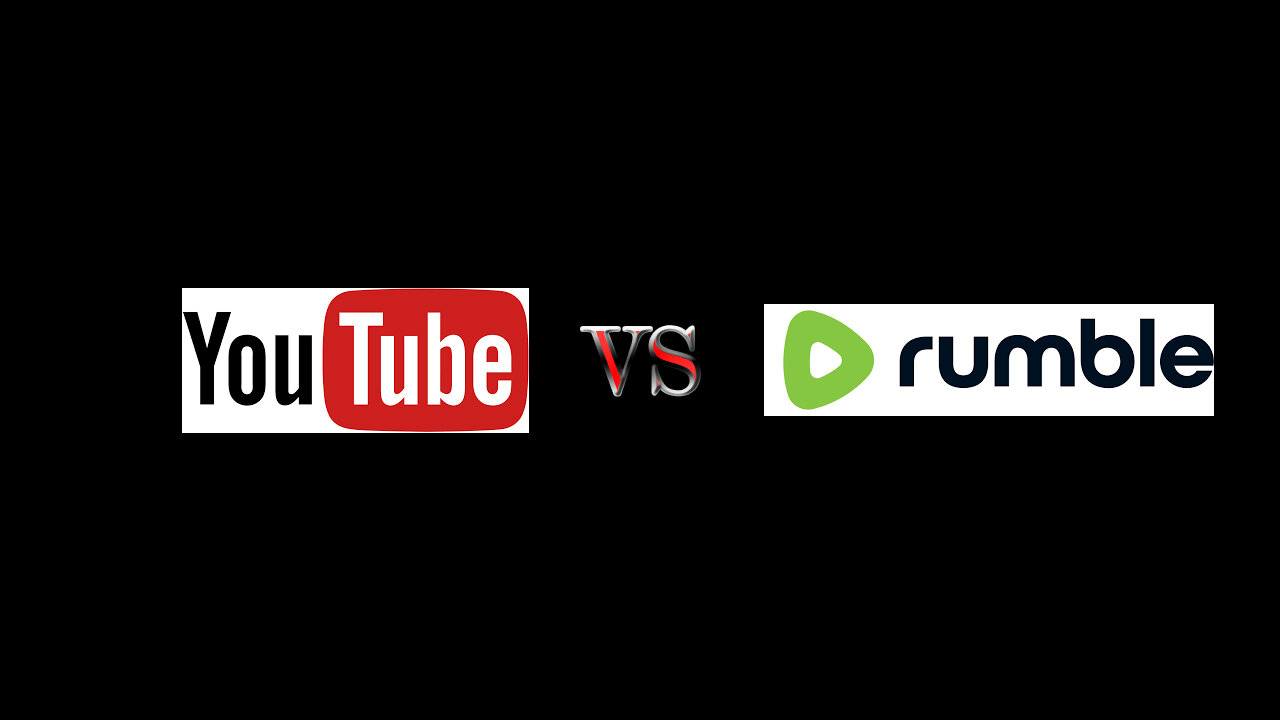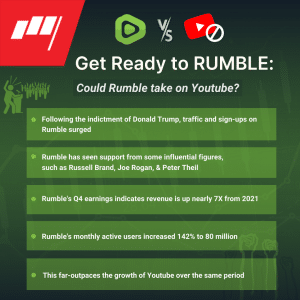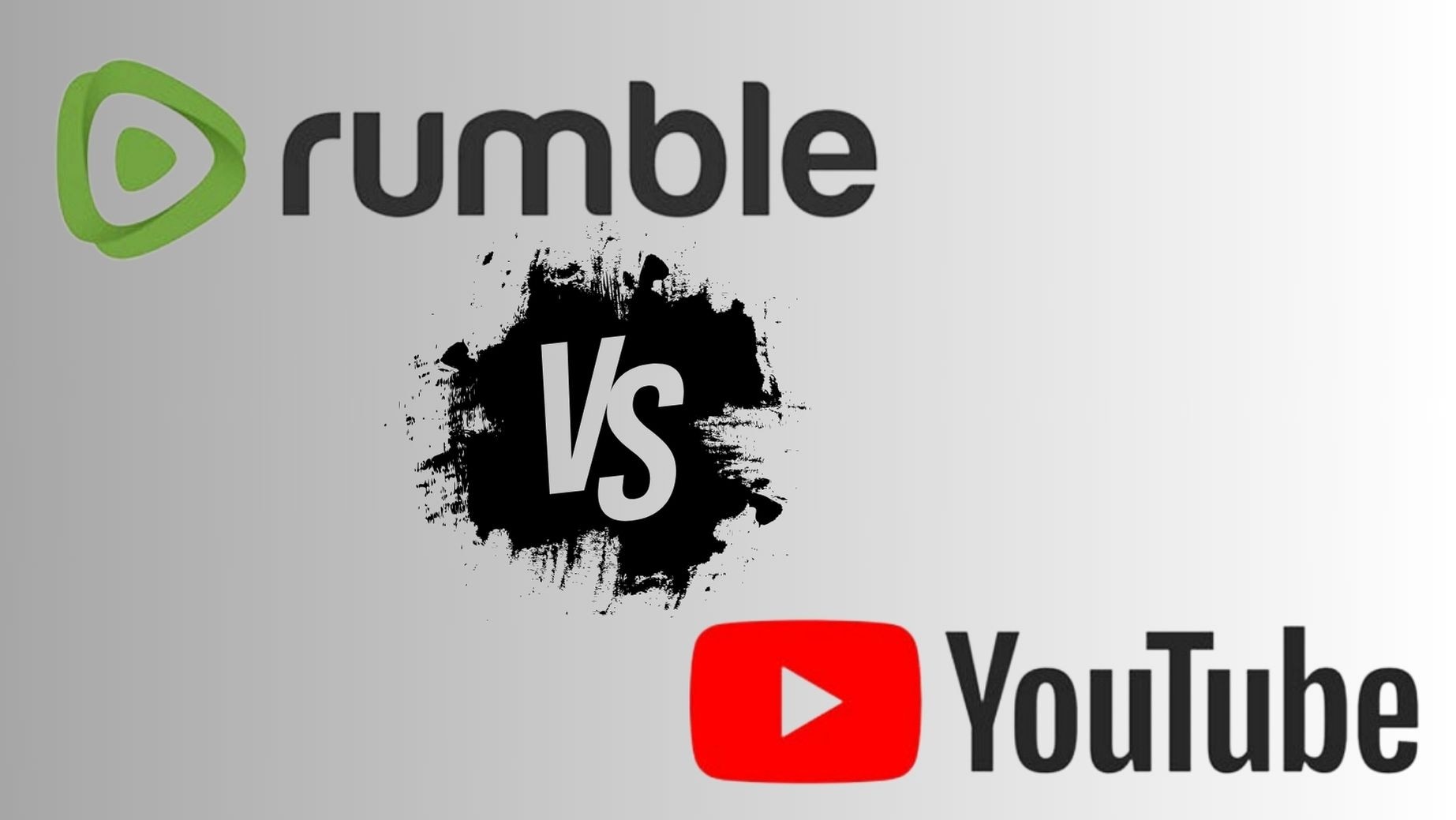In the ever-evolving world of online video platforms, Rumble and YouTube stand out as two major players. While YouTube has been a giant since its inception in 2005, Rumble is relatively new, emerging as a platform that caters to creators looking for an alternative to more traditional sites. As we dive into this comparison, it's essential to explore how these platforms differ in terms of growth, audience engagement, and overall popularity.
Overview of Rumble's Growth

Rumble has experienced remarkable growth since its launch in 2013, positioning itself as a serious competitor to YouTube. Here are some key points illustrating its growth trajectory:
- User Base Expansion: Initially starting as a video hosting platform, Rumble has significantly increased its user base, especially during the COVID-19 pandemic, when many content creators sought alternatives to mainstream platforms.
- Partnerships and Monetization: Rumble has focused on creating partnerships with content creators, offering a more favorable revenue-sharing model. This approach has attracted a diverse range of creators, from mainstream influencers to independent voices.
- Political and Social Appeal: Rumble has carved a niche by appealing to users who feel their views are underrepresented on other platforms. This has fostered a community that values free speech and diverse opinions.
- Content Variety: The platform hosts a wide array of content, from entertainment to educational videos. This variety attracts different demographics, further boosting its growth.
Rumble's growth can be quantified by some impressive statistics:
| Year | Monthly Active Users | Growth Rate |
|---|---|---|
| 2020 | 1 million | N/A |
| 2021 | 3 million | 200% |
| 2022 | 7 million | 133% |
| 2023 | 15 million | 114% |
This table shows a consistent upward trend, indicating strong interest in the platform. Rumble's ability to adapt to user needs and promote creative freedom has undoubtedly played a crucial role in its growth. As it continues to expand its reach, the competition with YouTube intensifies, providing users with more choices than ever before.
Also Read This: How to Watch the Royal Rumble 2024 – Streaming and Broadcast Options
3. Comparing User Engagement on Rumble and YouTube

When it comes to user engagement, Rumble and YouTube present distinct landscapes that cater to different audiences and preferences. Let’s dive into the nuances of how users interact with content on these platforms.
YouTube has long been the giant in the video-sharing arena, boasting over 2 billion monthly active users. This massive user base leads to more comments, likes, and shares. For example, popular YouTubers can generate thousands of comments on a single video within hours of posting. The platform’s sophisticated algorithm promotes content based on viewer behavior, which often keeps users glued to their screens for hours, resulting in high session times.
In contrast, Rumble, while smaller, has a fiercely dedicated user base, especially among those looking for alternative content that might not fit the mainstream narrative. Rumble encourages creators to monetize their content, which can enhance user investment in the platform. However, the total engagement numbers are much lower than YouTube. A typical Rumble video might garner fewer views but can still see a significant level of engagement from its niche audience.
Here’s a quick comparison of user engagement metrics:
- YouTube:
- 2 billion monthly active users
- High comment and like rates
- Long average watch times
- Rumble:
- Smaller user base but highly engaged
- Focus on monetization for creators
- Lower total views but dedicated audience
Ultimately, user engagement boils down to what viewers are looking for. YouTube thrives on mainstream entertainment and diverse content, while Rumble appeals to those seeking different perspectives and monetization opportunities. As both platforms evolve, their engagement strategies will continue to shape the way users interact with content.
Also Read This: When Does the Royal Rumble 2024 Start? Timings and Event Overview
4. Content Types and Audience Demographics

Understanding content types and audience demographics is crucial for creators looking to maximize their reach on either platform. Both Rumble and YouTube offer unique opportunities, but the type of content that succeeds can vary greatly.
YouTube is renowned for its vast array of content types. From vlogs and tutorials to music videos and live streams, the platform is a melting pot of creativity. According to recent data, approximately 81% of users turn to YouTube for tutorials, while 70% use it for entertainment. The audience is diverse, with significant representation from various age groups:
| Age Group | Percentage of Users |
|---|---|
| 18-24 | 20% |
| 25-34 | 30% |
| 35-44 | 20% |
| 45+ | 30% |
This demographic breakdown shows that YouTube appeals to a wide range of viewers, making it an ideal platform for creators in various niches. However, it also means that competition is fierce.
On the other hand, Rumble primarily attracts users interested in alternative viewpoints. While it may not boast the same content diversity as YouTube, it has carved out a niche for itself by focusing on news reports, commentary, and documentaries. The audience demographics lean towards older viewers, often ranging from 30 to 60 years old. This age group tends to be more engaged in political discussions and alternative media.
In summary, if you’re a creator deciding between the two platforms, it’s essential to consider:
- YouTube: Ideal for diverse content aimed at a younger audience.
- Rumble: Better for niche content targeting older viewers looking for alternative perspectives.
Both platforms have their strengths and cater to different types of creators and audiences. Understanding these dynamics can help you decide where to focus your content strategy.
Also Read This: Where Can I Watch Rumble Fish? Streaming Platforms and Options
5. Monetization Opportunities for Creators
When it comes to monetization, both Rumble and YouTube offer unique opportunities for creators that cater to different audiences and content types. Let’s dive into how these platforms stack up against each other in terms of making money.
YouTube has long been the go-to platform for creators looking to monetize their content. Through the YouTube Partner Program, creators can earn money via:
- Ad Revenue: Creators earn a share of the ad revenue generated from their videos, which can be a significant source of income.
- Channel Memberships: Fans can pay a monthly fee for exclusive perks, like badges and access to members-only content.
- Super Chat and Super Stickers: During live streams, viewers can pay to have their messages highlighted.
- Merchandise Shelf: Creators can showcase their products directly on their channel.
In contrast, Rumble has carved out its niche by offering a different monetization model. Here’s what it brings to the table:
- Video Licensing: Rumble allows creators to license their videos to media outlets, meaning they can earn money whenever someone uses their content.
- Direct Monetization: Creators can directly monetize their videos without needing to meet the high thresholds set by YouTube.
- Rumble's Revenue Share: The platform offers a transparent revenue-sharing model, which many creators appreciate for its simplicity.
Ultimately, the choice between Rumble and YouTube for monetization depends on the type of content you create and your audience. If you're a vlogger or lifestyle creator, YouTube might be more lucrative due to its massive reach. However, if you create unique or viral content, Rumble could provide more immediate financial rewards through licensing deals.
Also Read This: Is Rumble a Good Workout? Exploring the Fitness Benefits
6. Challenges Faced by Rumble
While Rumble is gaining traction, it’s not without its challenges. Here are a few hurdles the platform faces as it tries to compete with a giant like YouTube:
- Limited Audience Base: Unlike YouTube, which boasts billions of users, Rumble's audience is significantly smaller. This limits exposure for creators and the potential for viral growth.
- Perception Issues: Rumble has often been associated with controversial content, which can deter mainstream creators from joining the platform. Many still view it as a niche site rather than a mainstream alternative.
- Monetization Concerns: While Rumble offers different monetization options, some creators worry about the sustainability of these models. The success of video licensing isn’t guaranteed, and this uncertainty can be daunting.
- Content Moderation: The challenge of content moderation is present on all platforms, but Rumble has faced criticism regarding its approach to content regulation. Striking the right balance between free speech and maintaining community standards is tricky.
Despite these challenges, Rumble continues to grow and attract a different type of creator who might feel sidelined by YouTube’s policies. The key for Rumble will be to strategically address these issues while capturing the attention of a broader audience.
Also Read This: How Are Royal Rumbles Planned? Behind the Scenes of WWE’s Most Iconic Match
7. Future Projections for Rumble and YouTube
As we look ahead, the future for Rumble and YouTube presents a fascinating contrast shaped by their distinct philosophies and user bases. Rumble, with its focus on free speech and alternative content, is carving a niche that resonates with users seeking platforms that prioritize less censorship. It's projected that Rumble will continue to grow, especially among creators who feel restricted on mainstream platforms. The recent partnerships and an influx of conservative content creators suggest a strengthening audience base, potentially translating into more ad revenue.
On the other hand, YouTube remains the giant in the room, with its vast library of content and established monetization strategies. YouTube's investment in artificial intelligence for better content curation and user engagement is expected to keep it at the forefront of video sharing. As the platform continues to adapt to changing viewer habits, like the rising popularity of shorts and live streaming, it’s likely to maintain a significant edge over emerging competitors.
However, the video landscape is ever-evolving. With the rise of decentralized platforms and changing regulations around content distribution, Rumble’s appeal might grow, especially if it can attract creators disillusioned with traditional monetization models. The potential for broader partnerships, like those seen in the gaming community or educational sectors, could significantly boost Rumble’s visibility and user engagement.
Key Factors Influencing Future Growth:
- Creator Relations: Rumble’s proactive approach to engaging with creators could lead to a more diverse and robust content ecosystem.
- Technological Innovation: YouTube's continuous investment in AI and VR technologies may enhance user experience, keeping their audience loyal.
- Market Demand: As users increasingly seek niche content, platforms providing tailored experiences will likely thrive.
- Regulatory Changes: Changes in content regulation policies may either hinder or help platforms based on how well they adapt.
8. Conclusion: What the Data Indicates
In our comparison of Rumble and YouTube, the data paints a vivid picture of two platforms on markedly different paths. YouTube, with its established infrastructure and broad user base, continues to dominate in terms of overall views and content diversity. Its ability to adapt to contemporary trends ensures its relevance and appeal to advertisers.
Conversely, Rumble is emerging as a strong contender, particularly for those looking for an alternative to mainstream platforms. Its commitment to free speech and less stringent content moderation resonates with specific user demographics, which may drive its growth in specific niches.
Overall, while YouTube’s growth appears steady and robust, Rumble’s trajectory suggests a rising wave of interest that could challenge the established norms. The key takeaway is that both platforms serve distinct purposes, catering to different audiences with unique needs.
What to Consider Going Forward:
- The evolving role of content creators in shaping platform policies.
- The impact of viewer preferences on platform growth.
- How regulatory changes might alter the competitive landscape.
As we move into the future, keeping an eye on both platforms will be crucial for content creators, marketers, and viewers alike. The video-sharing arena is set to become even more dynamic, and understanding these shifts will provide valuable insights into where the industry is headed.
 admin
admin








